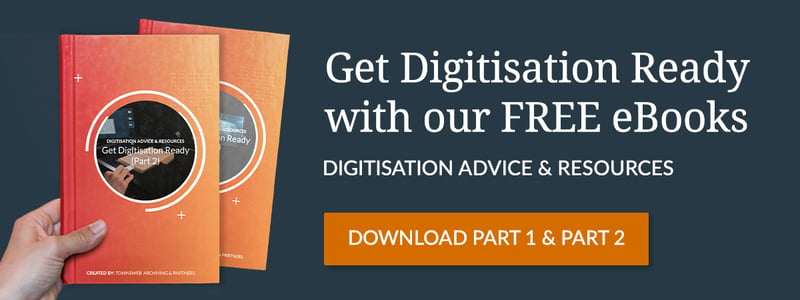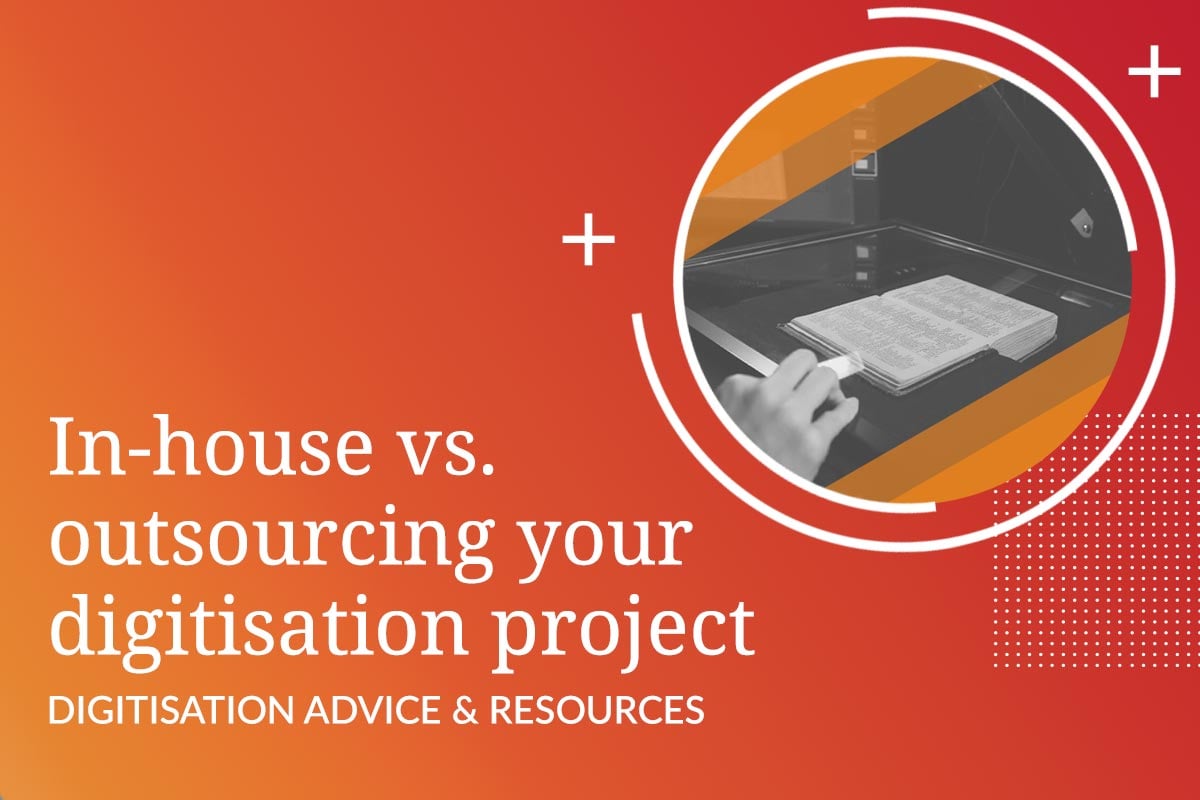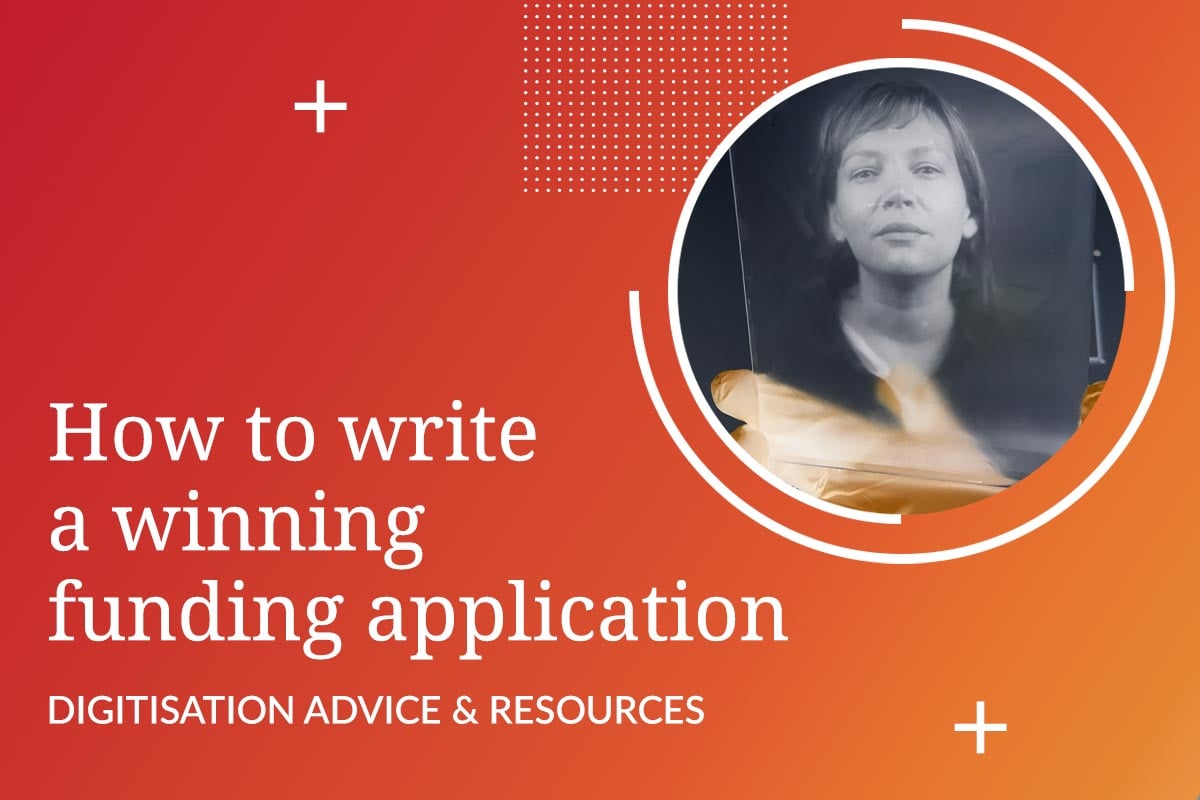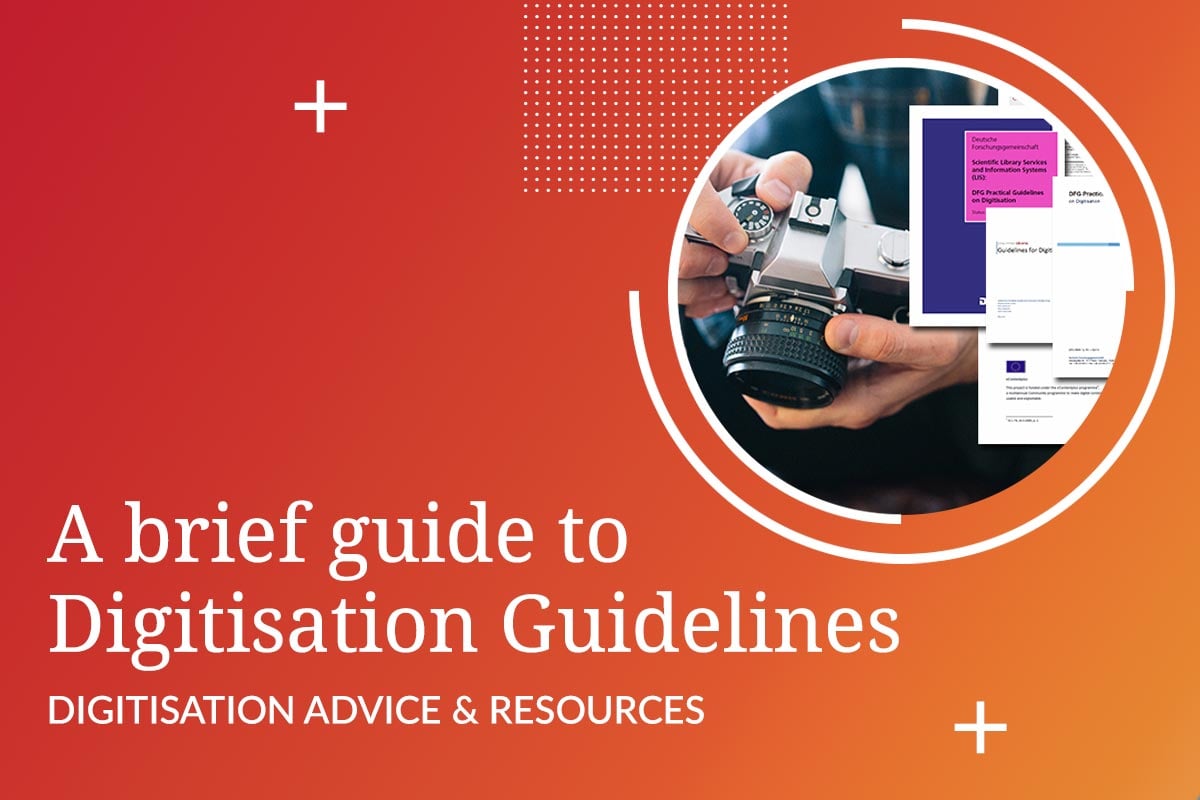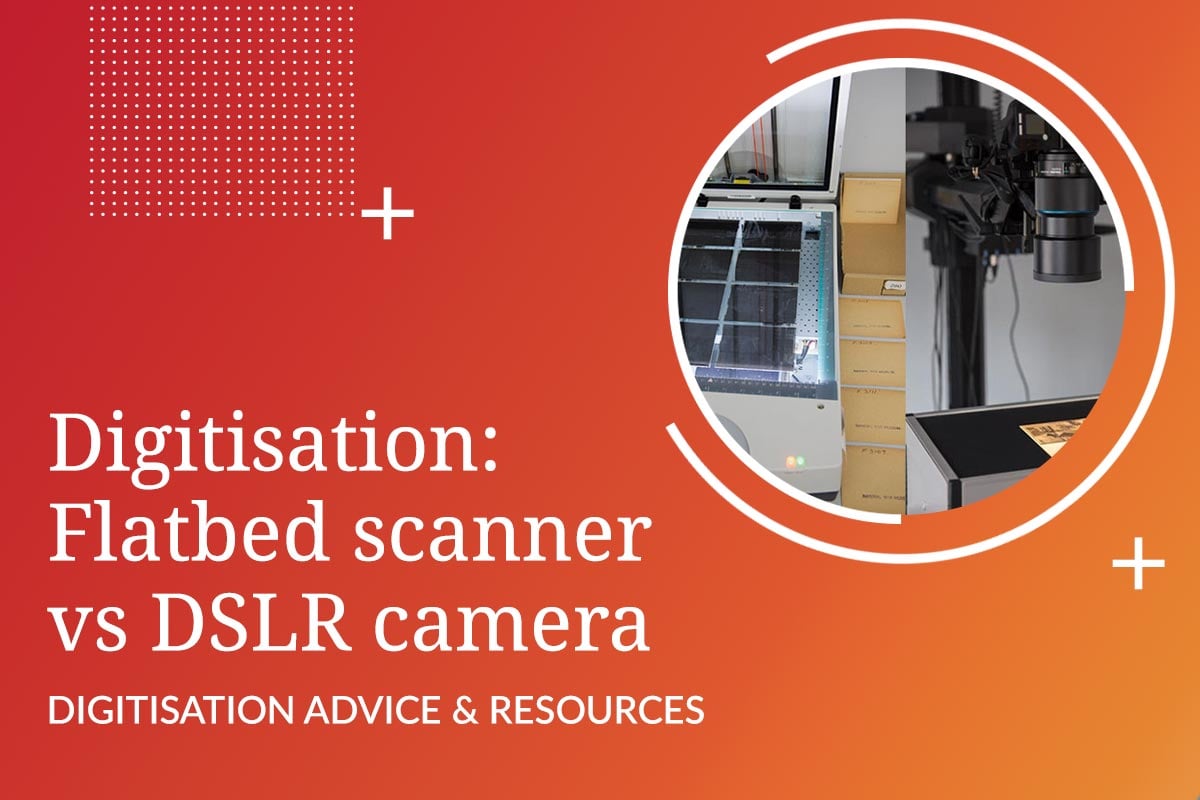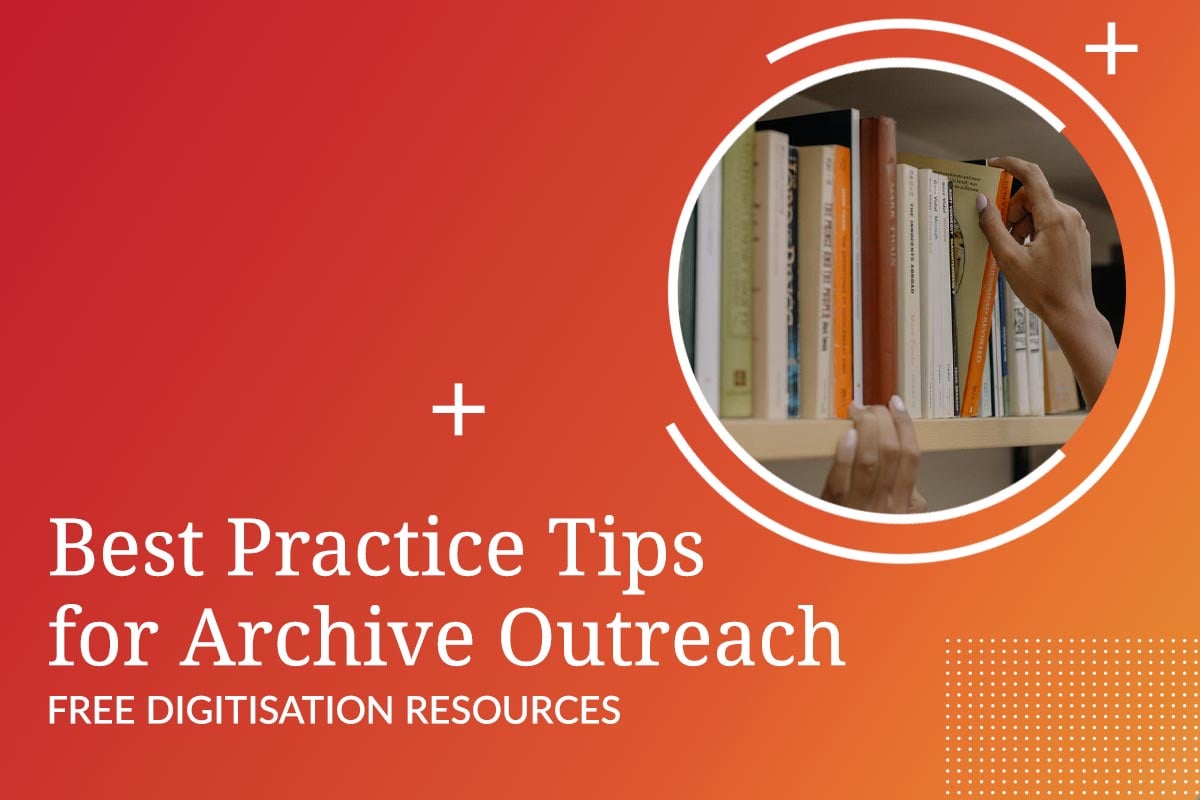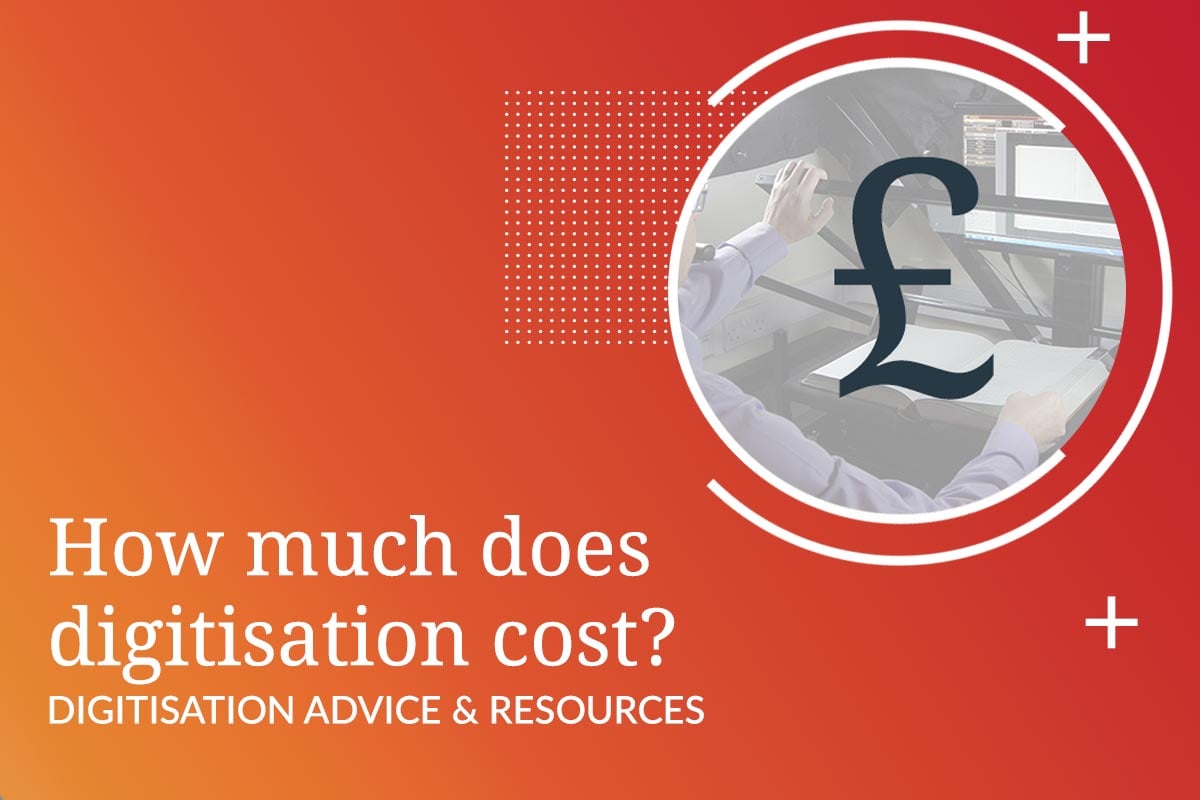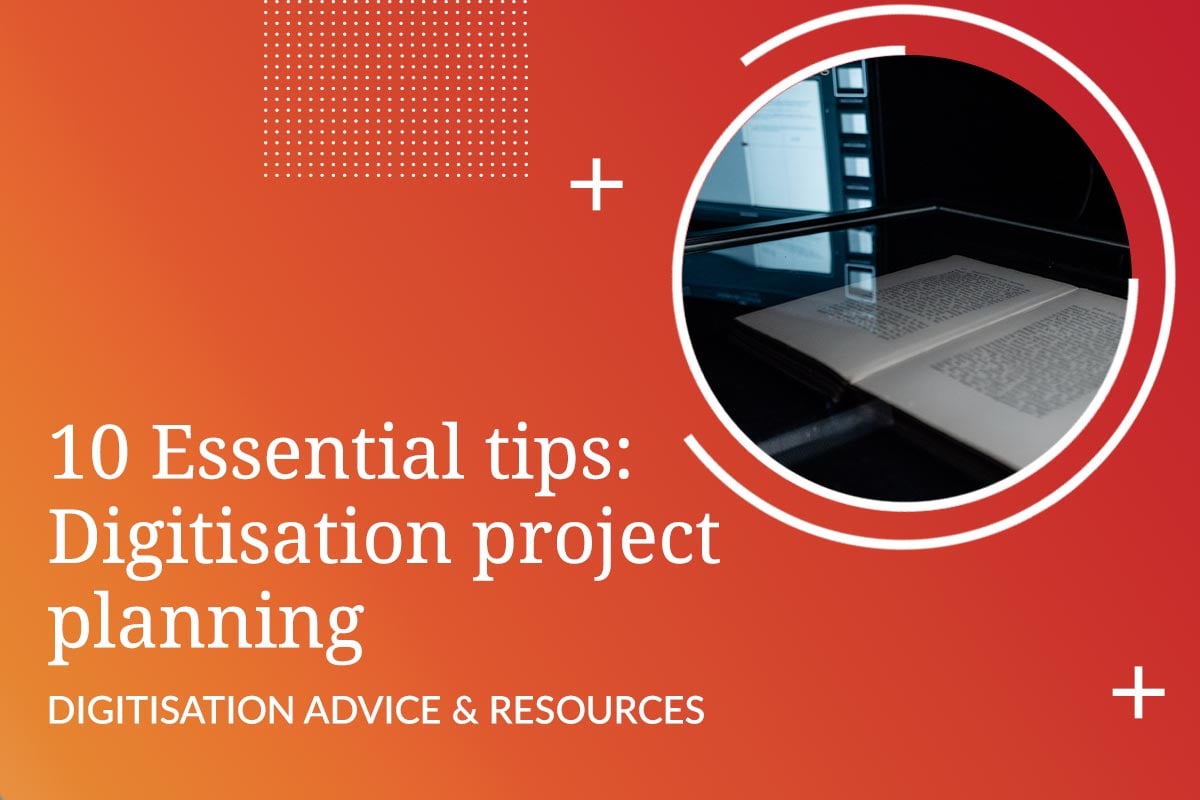
Digitisation Advice & Resources
We live and breathe digitisation here at TownsWeb Archiving. In fact, protecting heritage archives against damage and permanent loss is at the core of everything we do. We see these values as our responsibility to carry out the best possible service, and that's exactly what we do.
We have the benefit of state-of-the-art equipment and a solid team with combined specialist knowledge, expertise, and a wealth of experience. That’s a lot of know-how at our disposal, so why wouldn’t we share it with the very people and collections that we care about? This commitment extends to the knowledge and advice of the industry experts that we have been lucky enough to connect with over the years, and it is our hope that the resources we carefully plan, commission, and create will help to open up the whole digitisation process, making it more accessible to all.
So, whether you intend to outsource your digitisation project to experts (like TWA), or carry the work out in-house instead, you will be as prepared as you can possibly be to get it right, first time. Our hope is that more and more culturally significant heritage archives will be captured to the highest possible standard, protecting heritage material and our cultural identity.
Quick Links: Digitisation Advice & Resources
- In-House vs. Outsourcing Your Digitisation Project
- Debbie Cooper explains how to write when you've got a need
- A brief guide to Digitisation Guidelines
- Developing a successful National Heritage Lottery Fund funding bid for your archive project
- Workflows for digitising glass plate negatives: Scanner vs DSLR camera
- How much does Digitisation cost?
- Planning Digitisation Projects - Best Practice Tips
The remainder of this page will give you a brief overview of the free resources that we have spent time creating, together with links, so that you can find exactly what you are looking for.
In-House vs. Outsourcing Your Digitisation Project
As the saying goes there’s more than one way to skin a cat. Well, the same can be said for digitisation. But, let us assure you, absolutely no felines are harmed in the process. Our In-House vs. Outsourcing Your Digitisation Project resource takes a look at the two main approaches to getting your material scanned and converted to digital format:
- Doing it yourself at your own premises, using staff and, perhaps, volunteers; or
- Through a specialist company (which also includes the option to have your material digitised onsite at your own premises).
There are, of course, many matters to consider for both options and we all know that hindsight is a wonderful thing. Consequently, we invited two experts to talk about their own experiences and share their advice and feedback - post project.
Debbie Cooper explains how to write when you've got a need
It can be very hard to know where to start when applying for funding. If you’ve only ever been unsuccessful, it can be even harder to know where you might be going wrong. Funding is the single biggest barrier when it comes to getting those digitisation projects off the ground, so anything that takes the mystery out of securing it is a huge bonus for everyone.
A successful funding bid not only means the go-ahead for the digitisation of your valuable heritage collections, it's also a great way of analysing what went well and using that insight to shape future applications.
So, what better way to gather this valuable information than to talk to someone who has made a great success out of writing funding bids. The story Debbie Cooper, Manager for PCN and Producer for FORMAT Festival, shares is a motivational one, reminding us that we should always be careful to dot the i’s and cross the t’s when attempting to secure funding.
A brief guide to Digitisation Guidelines
If you are looking to embark on an in-house digitisation project for the first time or, indeed, you are outsourcing to a specialist provider, you will be keen to know what is going to happen to your material - especially if it will be behind closed doors. You might be wondering what the industry digitisation standards are, perhaps, or how the task of scanning your collections will be approached. Do you know what measures will be taken to prepare your collection and what specifications apply? Why are these standards in place at all, and what’s the consequence of scanning to the incorrect resolution? These are all questions you should satisfy in order to be better prepared.
Whether you are conducting the work yourself or not, it helps to understand the scanning workflow, so you know the process your material will follow and what scanning guidelines will be applied. There is so much information out there, it's a veritable jungle, so we decided to break it all down for you in our Brief Guide to Digitisation Guidelines.
Now you can spend less time trawling and more time getting digitisation ready.
Developing a successful National Heritage Lottery Fund funding bid for your archive project
While there are many funding opportunities available, the vast majority of which are identified in our Sources of Funding Guide (yet another free resource!) the National Heritage Lottery Fund (NLHF) is probably one of the most widely known.
NLHF offers grants from £3,000 up to millions of pounds in larger funding programmes. Though NLHF funding is a very attractive opportunity, competition is fierce. But, don’t let that challenge dissuade you. If you've done your research then you are giving yourself the best chance of success.
We decided a helping hand might be in order, so we invited Claire Adler (one of our previous TWA Grant judges, who also happens to be a National Lottery Heritage Fund Appointed Mentor and Independent Heritage Consultant), to share her knowledge and expertise. Developing a successful NLHF funding bid for your archive project: Essential tips identifies 10 distinct areas that you can focus on to make your application stand out. Consider it your funding bid dressed in High Vis!
Workflows for digitising glass plate negatives: Scanner vs DSLR camera
There are usually a number of ways to digitise different types of material. What you opt for will depend on the equipment you have available to you, and this will vary according to whether you are digitising in-house or are outsourcing your project to a specialist digitisation provider. The latter is likely to have greater resources and the benefit of state-of-the-art facilities.
When it comes to glass plate negatives, there are two options: flatbed scanning or DSLR Camera. As you would expect, the workflows for each follow a different digitisation process. So, if you’re wondering, how should I plan my digitisation project, then look no further. The above resource will tell you everything you need to know about both options, so you can decide on the best approach for your material.
Although we have experience using both methods, we called upon two guests for advice: Ted Dearberg, Digitisation Suite Manager at the Imperial War Museum London, and Andrew Bruce, Manager at the Postal Museum, to tell us about their own project goals and the notable advantages of each method.
Outreach for Archives - Best Practice Tips
Even if your primary motivation for digitising is to safeguard your material and protect it from deterioration, loss, or disaster, any funding provider is likely to want to know about your plans for outreach. Digitising your material puts it in prime condition for publishing and sharing, so why wouldn’t you?
There will be a good reason that you want to protect your heritage material and, whether it be for its value to culture, history, or identity, there will be others that would benefit from it too. People who would have the opportunity to learn from its story, research it, and see it outside of the archive store. This is where archive outreach comes in.
Now that community engagement is a real priority for funding providers, archive holders are getting ever more creative. If you're stuck for inspiration there will always be someone else who has tried something new. All you have to do is take the idea and make it your own! To make it even easier we invited four guests to talk about their own methods. Liz Batram, Development Manager, Dave Ewing, Senior Development Manager, Jan Nesaratnam, Senior Reader Services Librarian, and Ann Smith, Non-Fiction Librarian, tell us about their own projects and what measures they took to reach out to new and existing audiences. Get ready to be inspired!
How much does Digitisation cost?
It may feel like less of a challenge to ask yourself how long is a piece of string but this is one of the single most common digitisation questions. Along with ‘what’s the cost of book digitisation?’ and ‘what’s the cost of newspaper digitisation?’ It's not surprising really, given that the viability of a project often rests on this very point.
What we are really asking when we plug this query into Goolge is, can I actually afford to digitise my archive? Can I shop around for digitisation services? Can I get my collection digitised more cheaply elsewhere? Without an idea of how digitisation pricing works, and an estimate of what your digitisation costs might be, how can you get stakeholder buy-in? How can you budget? How can you apply for funding? How can you determine whether it will need to be completed in stages or whether, in fact, you can digitise more of your collection than you originally thought? Imagine that!
Cost forms the crucial early planning of a digitisation project, so we thought it prudent to provide the answers to all of these questions, and more, in our, How much does digitisation cost? resource. You will also find links to our most popular digitisation calculators which cover pretty much ALL material types!
Planning Digitisation Projects - Best Practice Tips
The beauty is in the planning when it comes to carrying out a successful digitisation project. Time spent planning will be time well spent, and it will help you to identify and iron out any potential issues that might slow your project down or bring it to a complete halt.
Though planning is a vital part of the process and journey, we do appreciate that it can be hard to know where to start. How do you plan for digitisation, especially if you haven't undertaken a digitisation project before? Well, good news, we have, many many times, so let us take some of the hard work out of it for you. Here we share our digitisation tips and know-how in our ‘Planning Digitisation Projects - Best Practice Tips’ resource.
From goal setting and identifying your users, to auditing your capabilities and considering all of your options, this resource should take some of the mystery out of the process and provide some really helpful suggestions, meaning you are more likely to achieve the outcomes and goals that you have set for yourself.
Further Reading
Not only have we produced lots of industry relevant content over the years, but we strive to continue producing new content for those areas that organisations are talking about right now, so keep an eye on our resource section or, even better, sign up for our newsletter.
If you found this page helpful then how about finding out how to digitise your material with our series of ‘How to Digitise...’ guides? You are sure to find your material type and we have some great videos too.
Speak to us
Despite the wealth of information available, it doesn’t beat speaking to a real person. If there’s anything you would like to discuss, or if you would like to talk about your particular requirements, then don’t hesitate to contact us. You might also find our heritage consultancy service helpful as you take that all-important next digitisation step.


